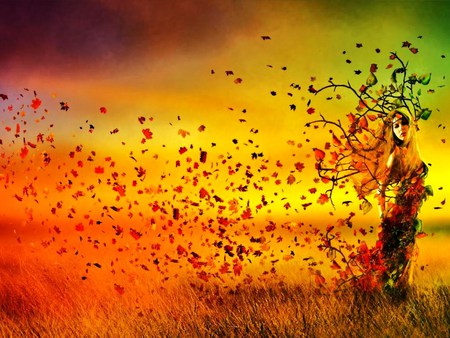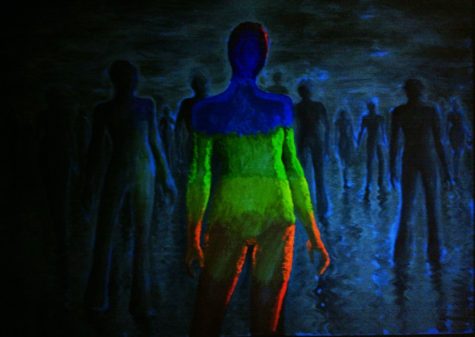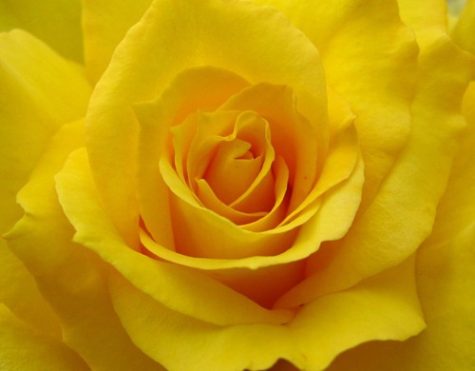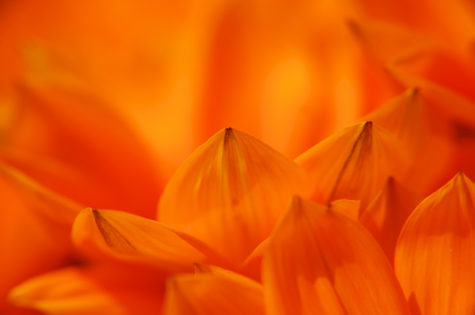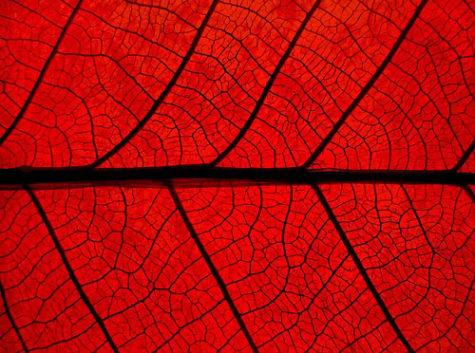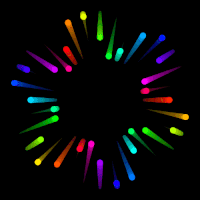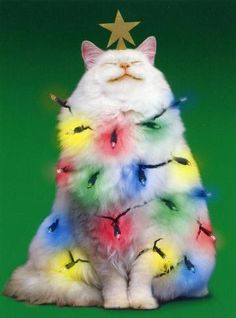Depression
Chase Away The Winter Blues
Do you experience winter blues? An effective way to change your moody outlook is to brighten up your life with color. Research has proven that color therapy, or chromo therapy, is a natural way to lift your spirits. In particular, the following colors have power to lift the spirit, combat cabin fever and chase away those winter blues.
- Yellow
Yellow captures the joy of sunshine, communicates happiness and stimulates your mind. It helps to reduce depression, giving one a sense of hope, reminding us that spring is just around the corner. It is important to expose yourself to morning sunlight as early as you can.
- Orange
Orange evokes excitement, enthusiasm and is an energetic color. It is joyful, playful, creative, and social color.
- Red
Red stimulates the body metabolism, and encourages one to engage in activity. The color red fights depression and gives one the energy to get up and do something.
Chase away the winter blues by introducing these powerful colors in your apparel, food you eat, and your home environment. So hurrah for Yellow, Orange, and Red.
Source: Balanced Women’s Blog
Light Starvation
“Light is a nutrient much like food,and like food,
the wrong kind can make us ill, and the right kind can keep us well.”
Humans need light of specific intensity and color range to regulate their internal biological clock. Without it, our daily, monthly and annual rhythms become disrupted. A lack of sunlight can lead to ill health with a variety of mental, emotional, and physical symptoms.
How does “light starvation” or “Malillumination” happen?
Working and living indoors: Poorly illuminated environments with inappropriate artificial lighting could have serious health implications. For example, most artificial indoor lighting lacks ultraviolet light (UV), which at the proper intensity is essential to the production of vitamin D and the metabolism of calcium.
Unhealthy artificial light: Most indoor lighting lacks the requisite full-range color distribution and the proper intensity to sustain health and certain functions, such as vitamin D and hormone production. Light’s effect on human mind body health has, until recently, been ignored in architecture, design, and engineering. Both fluorescent and incandescent lights have lots of Red, but are lacking in Green, Blue and Violet. Furthermore, indoor lighting is generally not bright enough, amounting to only 1/20th the intensity of outdoor light in the shade on a sunny day. The amount of light that we receive from 16 hours indoors is dramatically less than the amount we receive from a single hour outdoors.
Negative lifestyle habits: Even in sunny California and Florida, the average individual receives little sunlight in a 24-hour period. The additional interferences we have, such as tinted sunglasses and contact lenses, tinted car windshields, and tinted windows, don’t allow in the health-giving properties of the entire spectrum of light.
Seasons/low light conditions: In winter in the northern hemisphere, the onset of winter depression and seasonal affective disorder (S.A.D.) occurs in late fall and peaks in February. (These symptoms usually wane in early spring, as the days get longer.)
The Symptoms of Light Starvation:
- Irritability
- Fatigue Increased illness – due to lowered immune function
- Insomnia
- Hypersomnia – sleeping too much
- Depression
- Alcoholism
- Suicide
- Vitamin D deficiency
- Calcium deficiency
- A disturbance of bodily rhythms such as SAD, winter depression and other phase shift disorders.
What Light Nourishes:
Light enables us to see, and it plays several vital roles as it enters our eyes and our skin. Light enters the pineal gland (the body’s light meter) via the retina. Its neurotransmitter, melatonin, influences the hypothalamus, which is responsible for controlling many of the endocrine functions that are disturbed in depressed individuals such as sleep and wakefulness, reproductive physiology, mood, and the timing of the biological clock.
Sunlight shining on the skin triggers the production of melanin, a dark pigment that protects the surface of the body. As UV rays from the sun penetrate the skin’s surface layer of melanin, the body’s supply of vitamin D is replenished. Vitamin D is known as the “sunshine vitamin”, and although vitamin D can be obtained from milk and fish, this form is not as biologically effective as the vitamin D produced by sunlight.
Vitamin D3 is a skin hormone called solitrol, which works in conjunction with the pineal hormone, melatonin, to control the body’s response to light and darkness. Solitrol works antagonistically with the melatonin to produce changes in mood and our 24 hour bodily rhythms, as well as affecting our immune system.
Vitamin D enters the blood stream and goes to the kidneys and liver where it plays a key role in the absorption of calcium from foods, as well as the utilization of the mineral phosphorus. Nutritionally oriented physician Dr. Elson Haas states that since vitamin D is intimately related to the metabolism of calcium and phosphorus, it is important to the growth and development of bones and teeth in children. Dr. Haas adds that D3, because of its effect on calcium levels, is important in the maintenance of the nervous system, heart functioning, and blood clotting.
Using The Color Yellow
You put a blob of yellow here, and another at the further edge of the canvas: straight away a rapport is established between them. Colour acts in the way that music does… ~Georges Braque
Wearing Yellow:
Wear yellow to present a cheery, uplifting effect. Use it around your office to help keep a clear your mind, and improve memory and decision making.
Put yellow in your life when there is:
- Confusion and indecision, poor memory.
- Fear and anxiety caused by unknown factors leading to nervous and digestive disorders.
- Nervous exhaustion, nervous breakdown, “burn out,” panic attacks, hot flashes.
- Poor memory, inability to concentrate or study.
- Tendency to SAD, or lethargy and depression in dull weather.
- Irritability, tension, restlessness, feelings of depression and inability to make decisions.
Questions to ask yourself when drawn to yellow:
- Is there a need to start thinking clearly?
- What are you afraid of?
Loving Yellow:
Watch out for self-centered, “me first” energy when someone prefers yellow to the rest of the rainbow. If yellow is your favorite color, temper your use of the word “I” when you’re interested in someone else. You can come across as too ego-centric otherwise. Now, if you’re dating someone whose favorite hue is yellow, make sure to jump in and share stories about yourself, since this person may not give you much room.
Yellow is the color of cheerfulness, curiosity, alternation, flexibility, progress, amusement, contact through traveling and communication, learning and practical knowledge. People of high intellect favor yellow. A person who loves yellow may have a feeling for writing and speaking.
Not loving yellow:
A person who has aversion to yellow may be emotionally disappointed and bitter. May have tendency to rationalize feelings, or to avoid the depth of life by often changing relationships, many superficial relationships and/or constant changing activities.
Note: This post was compiled by Shirley Twofeathers for Color Therapy, you may repost and share without karmic repercussions, but only if you give me credit and a link back to this website. Blessed be.
Healing With The Color Yellow
Whenever the pressure of our complex city life thins my blood and numbs my brain, I seek relief in the trail; and when I hear the coyote wailing to the yellow dawn, my cares fall from me. I am happy. ~Hamlin Garland
Overview:
Yellow is associated with the solar plexus chakra. Yellow activates the motor nerves. It generates energy for the muscles. Disturbance in the supply of yellow energy to any part of the body can cause disturbance of function in that area including partial or complete paralysis from the deficiency of sensory and/or motor energy. Its complement is violet.
Yellow activates the motor nerves. It generates energy for the muscles. Disturbance in the supply of yellow energy to any part of the body can cause disturbance of function in that area including partial or complete paralysis from the deficiency of sensory and/or motor energy.
Yellow is a mixture of red and green rays. It has half the stimulating potency of red and half the reparative potency of the green. Hence, it tends both to stimulate function and to repair damaged cells. Yellow light directed at the intestinal tract for short periods is a digestant. For longer periods, it acts both as catharsis and as a cathartic. It also stimulates the flow of bile and has an anthelmintic action (antagonistic to parasites and worms).
Yellow predominantly affects the solar plexus chakra, and it is stimulating to the mental faculties of the individual. It can be used for depression. It helps awaken an enthusiasm for life. It awakens greater confidence and optimism. It is also effective in the treatment of digestive problems. It is beneficial to the stomach, the intestines, the bladder, and the entire eliminative system as well. It is very effective in the treatment of most headaches. It helps to balance the gastrointestinal tract.
Healing with the color yellow:
- Use yellow for a weak and confused immune system – frequent minor illnesses, intolerance’s and allergies to foods and other substances.
- Digestive problems, inefficient absorption of nutrients.
- Yellow is used to treat dermatitis and other skin problems.
- It activates the motor nerves. It affects the nervous system, good for nervous exhaustion.
- Yellow can be used for conditions of the stomach, liver, and intestines. Speeds up the digestion and assimilation, and the stool.
- Use it for digestive disorders, gas, food allergies, liver problems, diabetes, hypoglycemia, hyperthyroid, gallstones, muscle cramps, nervous disorders, depression, exhaustion and breathing problems, lymphatic problems, dispelling fears, building bones.
- Yellow also speeds metabolism.
- Yellow helps strengthen the nerves and the mind. It helps awaken mental inspiration and stimulates higher mentality. Thus, it is an excellent color for nervous or nerve-related conditions or ailments.
- Yellow energizes the muscles.
- Dark yellow soothes pains in the nerves (shooting pains).
- Yellow also helps the pores of the skin and aids scarred tissue in healing itself.
- Yellow affects the digestive system, gastrointestinal tract, adrenal activity and the left hemisphere brain activity.
Contra-Indications:
- In healing, yellow must be used carefully because it is highly stimulating and can cause exhaustion and depression if overused.
- Intense yellow is the color that is most stressful for the eyes. The amount of light that is reflected by this bright color results in over stimulation of the eyes; it can actually cause eye irritation.
- Bright yellow rooms are often too intense. People may become irritated and nervous in a yellow room, children may have trouble sleeping and babies may cry more.
- Do not use yellow for nervous breakdowns, use blue or green.
- Do not use yellow if you are suffering from acute inflammation, delirium, diarrhea, fever, neuralgia, over-excitement, palpitation of the heart.
- Excessive amounts or exposures to yellow may make one superficial or hyperactive. It should be balanced with colors from the blue spectrum.
Note: This post was compiled by Shirley Twofeathers for Color Therapy, you may repost and share without karmic repercussions, but only if you give me credit and a link back to this website. Blessed be.
Healing With The Color Orange
“When everybody is planting apples a visionary plants oranges.”
― Matshona Dhliwayo Martinez
Overview:
Orange is associated with the spleen chakra, which regulates circulation and metabolism. Orange stimulates the thyroid gland, is a respiratory stimulant, but a depressant of parathyroid action. The orange vibration expands the lungs. Orange promotes happiness and joyousness. Orange is used to treat depression, hypothyroidism and kidney and lung problems, such as asthma and bronchitis. Its complement is blue.
Orange has an antispasmatic effect. It is useful for muscle spasms or cramps of all kinds. Orange acts on the spleen and the pancreas to help assimilation and circulation. It aids the calcium metabolism of the body and strengthens the lungs. Orange stimulates the milk producing action of the breast after child birth. Orange stimulates and increases the pulse rate without affecting the blood pressure.
Orange can assist us in healing conditions of the spleen, pancreas, stomach, intestines, adrenals, food assimilation, and depression.
Individuals experiencing emotional paralysis can be helped with this color, especially the peach shades. Peach is a color that strengthens the aura and gives it a little extra cushioning in recovery processes. It and most shades of orange can be used to revitalize the physical body. It makes a good tonic after a bout of illness, for it is strengthening to the eliminative system of the body.
Healing with the color orange:
- In healing work, orange is used to raise energy levels, increase immunity, and to increase sexual potency.
- Orange stimulates the lungs, the respiration and the digestion and is good for all digestive ailments, chest and kidney diseases.
- Constipation, muscular cramps and spasms, insufficient lactation, skin problems, allergies, repression and inhibition.
- Orange will have a gentle warming effect if used lightly.
- An antidote for depression, loneliness and tiredness.
- Orange color and food provides vital energetic supports for vegetarians.
- Good for chest conditions, chronic rheumatism and asthma.
- It can recharge the etheric body which is the template for the physical body.
- Increases the activity of the thyroid.
- Reliefs muscle cramps and spasms.
- Good for lactation as it increases the amount of mothers milk.
Contra-Indications:
- Orange should not be used for too long.
- It is not a good color for nervous people or those who are easily over excited or prone to anxiety.
- Too much orange may adversely affects the nerves.
- Orange should be balanced with shades of green-blues.
Note: This post was compiled by Shirley Twofeathers for Color Therapy, you may repost and share without karmic repercussions, but only if you give me credit and a link back to this website. Blessed be.
Healing With The Color Red
“As soon as I turned the key I saw it hanging, the color of fire and sunset. the colour of flamboyant flowers. ‘If you are buried under a flamboyant tree, ‘ I said, ‘your soul is lifted up when it flowers. Everyone wants that.’
― Jean Rhys
Overview:
Red is associated with the root chakra. It promotes vitality, strength, sexuality, willpower, and alertness. Red is used to counteract anemia, lack of energy, impotence, and low blood pressure. Its complement is turquoise.
Red stimulates the sensory nerves. It is beneficial in deficiencies of smell, sight, hearing, taste and touch. Red activates the circulation of the blood, excites the cerebro-spinal fluid and sympathetic nervous systems. Red is good for the muscular system and the left cerebral brain hemisphere. It is excellent for contracted muscles. Red builds the hemoglobin. It energizes the liver.
Red rays decompose the salt crystals in the body and act as a catalyst for ionization. Red is particularly useful in the absorption of iron into the body.
Red affects the circulatory system and sexuality. It stimulates the overall energy levels of the metabolism, lower extremities and most blood conditions. Red is a stimulating color. It will energize the root chakra. It warms and it activates. It awakens our physical life force.
Red strengthens the physical energy and the will of the individual. It can stimulate deeper passions, whether they be of sex and love, courage, hatred or even revenge. Red is useful in the management of stress. It also plays a key role in the health of the individual – physically, mentally, emotionally, and spiritually
Healing with the color red:
- It can be used with other treatment for reducing cancers.
- For cauterizing wounds, drying up weeping sores, healing wounds, diseases of the blood and circulation.
- Red will warm cold areas and can reduce pain.
- Red can be used for colds, poor circulation, anemia, and mucus ailments.
- It can help with depression.
- Anemia, poor circulation, increasing vitality.
- Red links with and stimulates the root chakra, at the base of the spine, causing the adrenal glands to release Adrenalin. This results in greater strength.
- Red causes hemoglobin to multiply, thus increasing energy and raising body temperature. It is excellent for anemia and blood-related conditions.
- It loosens, opens up clogs, releases stiffness and constrictions. It is excellent for areas that have become stiffened or constricted.
Contra-indications:
- Sometimes red will cause an intensification of pain in sensitive people, a sort of “color burn.”
- It can stimulate quick decisions or rash actions.
- Red is not normally used on people with high blood pressure or anxiety.
- Is not to be used for fresh burns or when bleeding is a problem.
- Over exposure can make you agitated or even aggressive.
- Avoid red in most cases of insanity and emotional disturbances.
- Can elevate blood pressure and respiratory rates.
- Excessive use of red will produce fever and exhaustion. It promotes hostility, anger, violence.
- Too much red can over-stimulate and aggravate certain conditions.
- High blood pressure is an indication of too much red energy within the system.
It is recommended that red be used in conjunction with blue rays. Red is balanced by the color green.
Note: This post was compiled by Shirley Twofeathers for Color Therapy, you may repost and share without karmic repercussions, but only if you give me credit and a link back to this website. Blessed be.
